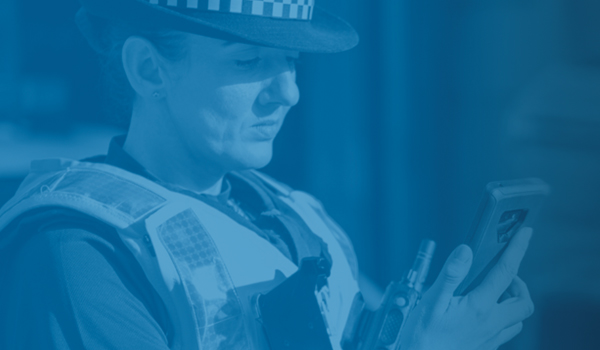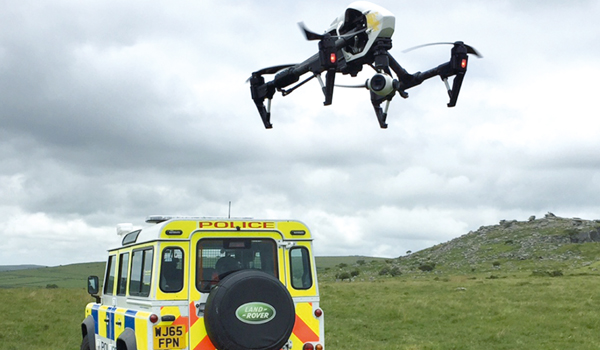Consensus for change
Rising public expectations will spark rapid innovation in technology for public safety, says Fergus Mayne.
History shows that times of crisis or disruption often stimulate innovation and great change. The Covid-19 pandemic has been no exception. The past two years have dramatically changed the way that we think and feel about safety in the UK.
The shared experience of the pandemic has caused seismic changes to public health responses and set new expectations and responsibilities for safety, accelerating changes in our personal priorities and catalysing the adoption of new technologies.
The pandemic has required citizens to embrace digital technology and skills to a level we have never seen before. How else could we have adjusted to a world of checking in with QR codes, telehealth consultations and those ubiquitous video conferencing calls. It is hard to believe we have reached a point where society is now contemplating how far the metaverse will go to converge the real and virtual worlds – but that only serves to remind us that technology is moving at such a phenomenal rate.
All of these developments are placing greater public expectations on our emergency services because we expect that they are working with tools that are as good, if not better, than what citizens are using.
As we look to 2022, public safety organisations must prioritise having the technology and tools in place to respond efficiently and effectively to future disruption.
The pandemic arrived at a time when the prevalence of data and digital technology can make us safer and more secure, and citizen expectations have never been higher – recent research revealed that 95 per cent of citizens in the UK now want to see public safety transformed through the use of advanced technology. This correlates to a global movement where safety is becoming a shared responsibility among service providers, industry and society. These groups now need to work together to ensure that safety technology is used in fair and inclusive ways. This will increase trust, collaboration and further improve the way public safety services are delivered.
Integrated technologies will offer exciting new solutions for public safety challenges
During the past two years, every public safety organisation, medical service, transport company, school, commercial organisation and general public have formed part of a wider collective facing the common threat of the pandemic.
Each group has a different perspective on what safety means for them and the pandemic has caused many to reassess how technology can be used to support safety.
There is greater public expectation on our emergency services because we expect that they are working with tools as good, if not better, than what citizens are using
In the UK, recent research revealed that 72 per cent of citizens now say advanced technologies, such as video cameras, data analytics, cybersecurity and the cloud, are needed to address the challenges of the modern world. For emergency services, improving the way these technologies work together can lead to better outcomes overall – that is never more important than when a crisis hits and every second counts.
As we look to the year ahead, integrated technology is a vital tool to enable organisations to reimagine their entire approach to public safety. This includes integrated technology platforms that enable organisations to identify and analyse events, communicate seamlessly, automate workflows and respond appropriately in any situation to keep the public safe.
Police must continue to educate and provide transparency around the use of AI
Algorithms and data analytics are playing an increasingly important role in all aspects of society, including in the UK’s policing and security services.
As with any artificial intelligence (AI) technology, trust and transparency are vital. Research conducted this year revealed that only 52 per cent of UK respondents would trust AI to analyse situations of threat. This indicates a degree of uncertainty that is perhaps not surprising, given common depictions of futuristic AI in policing in sci-fi films.
A key priority for the successful implementation of AI within public safety is to explain how, when used responsibly, it can have a profound and positive impact. When AI is integrated into a wider set of workflows, its application in a public safety setting is transformative, potentially enabling agencies to predict incidents before they occur.
One of the most powerful uses of AI is to support and enhance human decision-making by eliminating some manual, repetitive tasks. AI can quickly sift through many hours of video footage to find a potential criminal suspect, which would then be verified by humans who can decide on what action to take.
It is important to note that AI should never replace the role of people completely in critical industries such as public safety, but using it in this way can empower people by freeing up time for more important, productive tasks.
The success of public safety technology innovation and the evolution of AI depends on citizens, public safety agencies and enterprises all being able to understand and trust the technologies that we are increasingly using.
As we look towards 2022, the gap between safety objectives and technology will continue to close, but its success depends on strong community and stakeholder engagement.
Motorola Solutions global research study – Consensus for change: Transforming safety through technology – at https://www.motorolasolutions.com/content/dam/msi/docs/dt/consensusforchange/consensus_for_change_report.pdf
Fergus Mayne is Country Manager, UK and Ireland, at Motorola Solutions.





